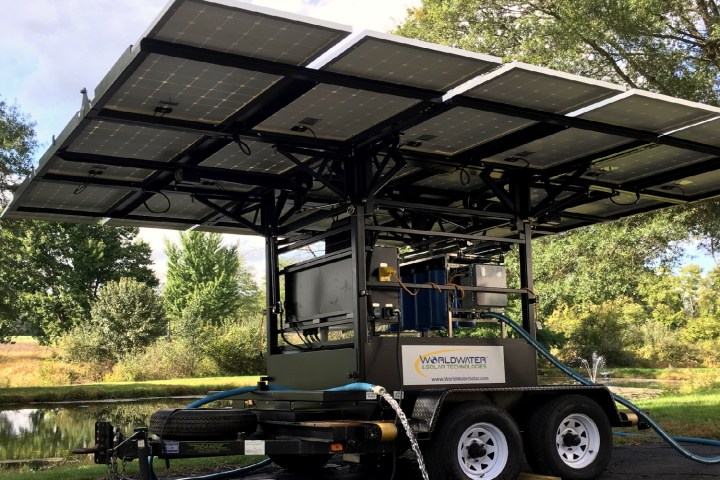
In case you haven’t noticed, there is a clean water problem. Every day, a new community somewhere in the world experiences issues with contaminated water and has to turn to either bottled water or boiling water in order to fulfill clean water requirements. Quench Water & Solar, a subsidiary of the company WorldWater & Solar Technologies Inc., is offering a solution. And it’s one that will help both local entrepreneurs, communities, and the environment.
For the past three decades, Quench Water & Solar has been delivering solar and water solutions around the world. Along the way, it developed mobile, solar-powered water purification systems, which can be easily towed to any site and made operational within minutes. These mobile purification systems filter water using a collection of filtration membranes, ranging from macroparticle filters to ultrafiltration filters. If necessary, they can even filter atomic-sized contaminants, like seawater salt and metal ions, via the process of reverse osmosis. The end result? Safe, clean drinking water that’s both cost-effective and environmentally friendly.
Quench Water & Solar’s water systems have previously been used to provide clean water in more than 30 countries. Now the company is offering the technology as a licensing opportunity aimed at entrepreneurs, communities, and other organizations.

Two of the models made by Quench include the Mobile MaxPure, a foldable 4kW solar array that can purify up to 30,000 gallons of fresh water per day, and the 900W Mobile MaxClear, which can purify up to 10,000 gallons of fresh water during that same period.
“Upon licensing, the individual or business becomes the owner of the machine,” Ben Switzer, Quench’s director of business development, told Digital Trends. “Leasing and financing options are available, as well as credit repair support for those interested. The Quench business model was made with ultimate flexibility in mind. Licensees can decide where they pump water, how long they work, and how much they charge [per] liter or gallon. They also decide their focus: whether they decide they’d like to start a water delivery service or become a hydration station at a music festival, the choice is theirs.”
Quench isn’t the only group investigating smart clean water solutions. From personal water purifiers to more experimental solutions involving black, carbon-dipped paper and specially engineered sand, there is a lot of innovation going on in this space.


